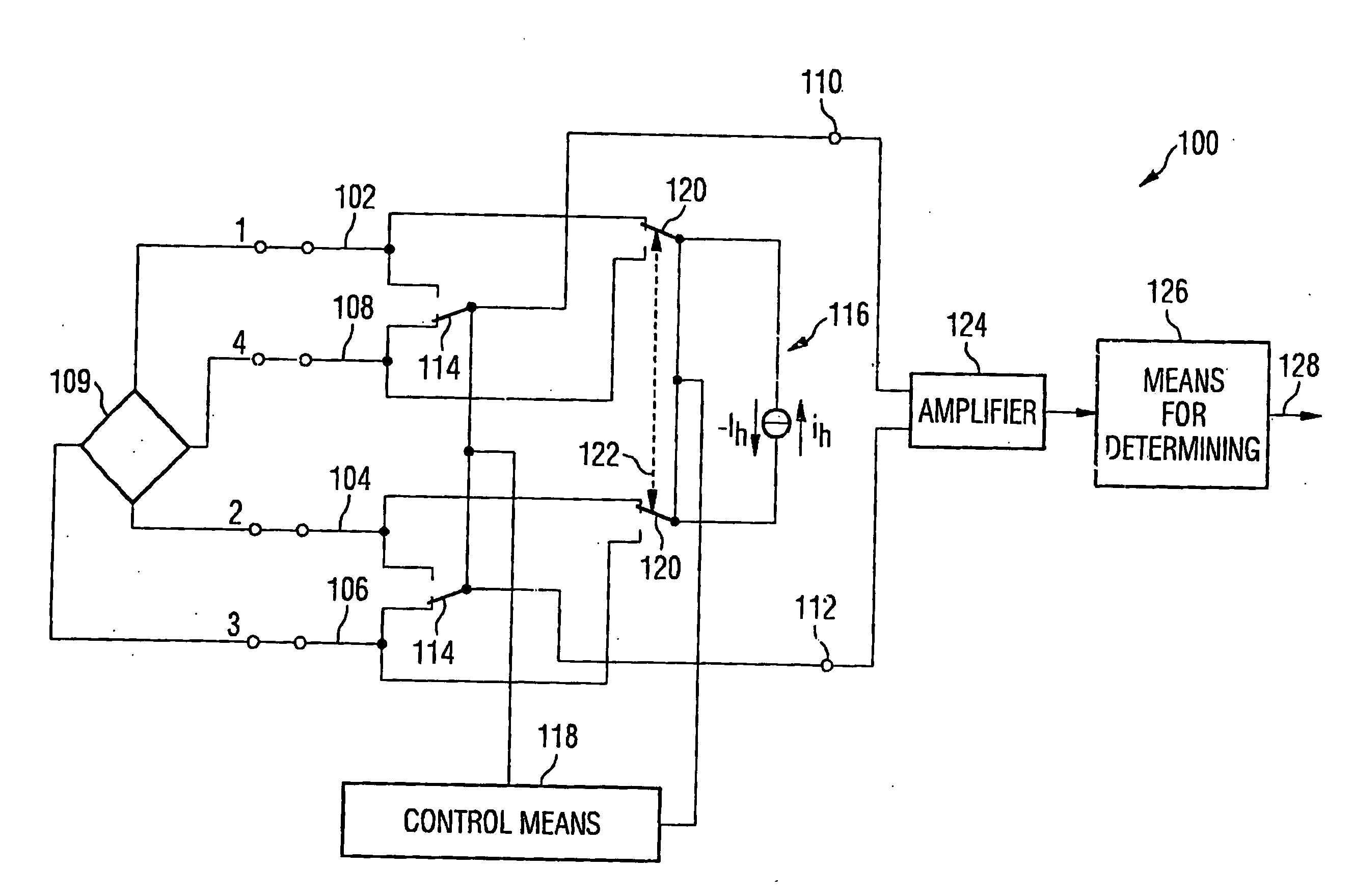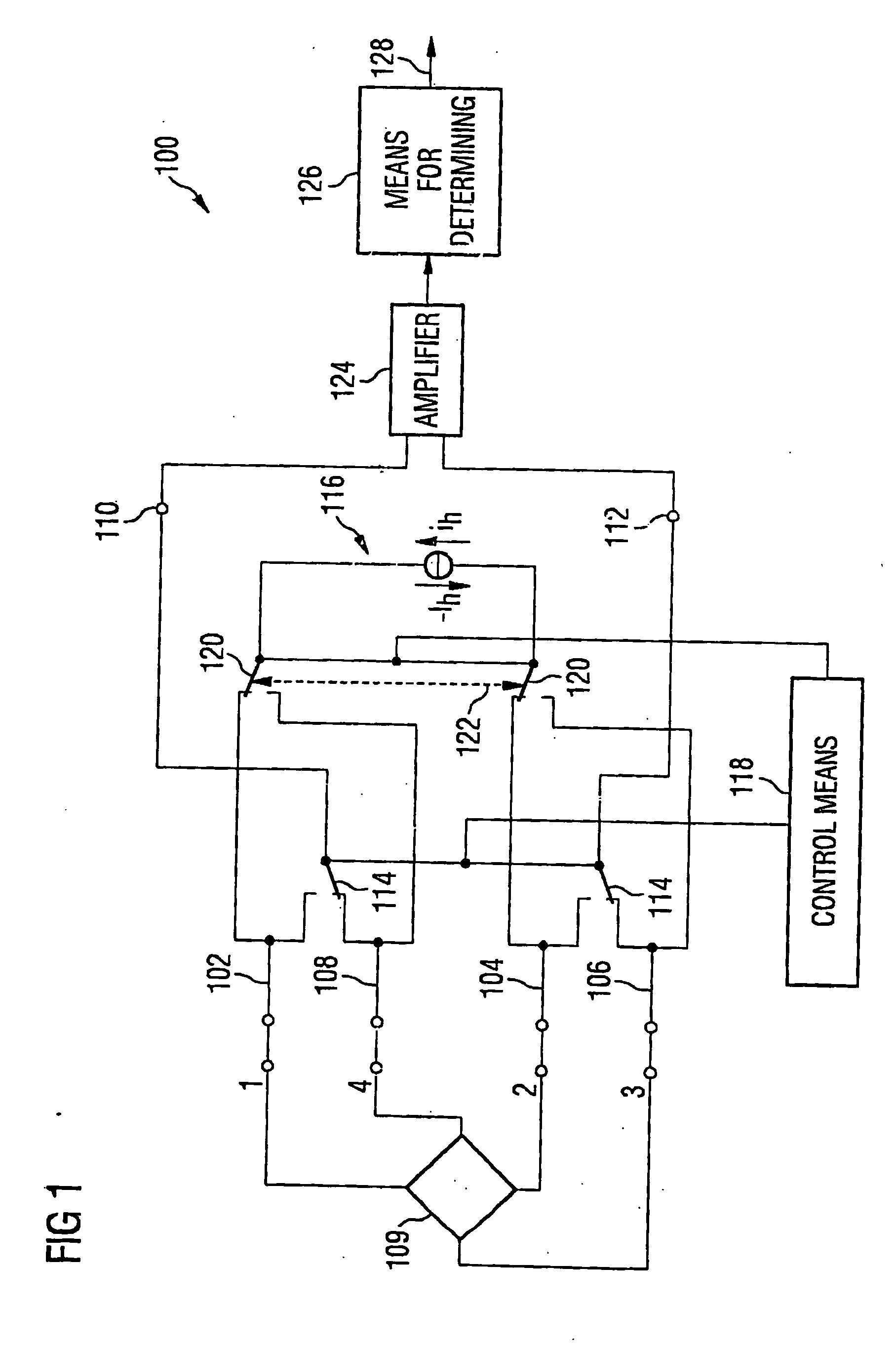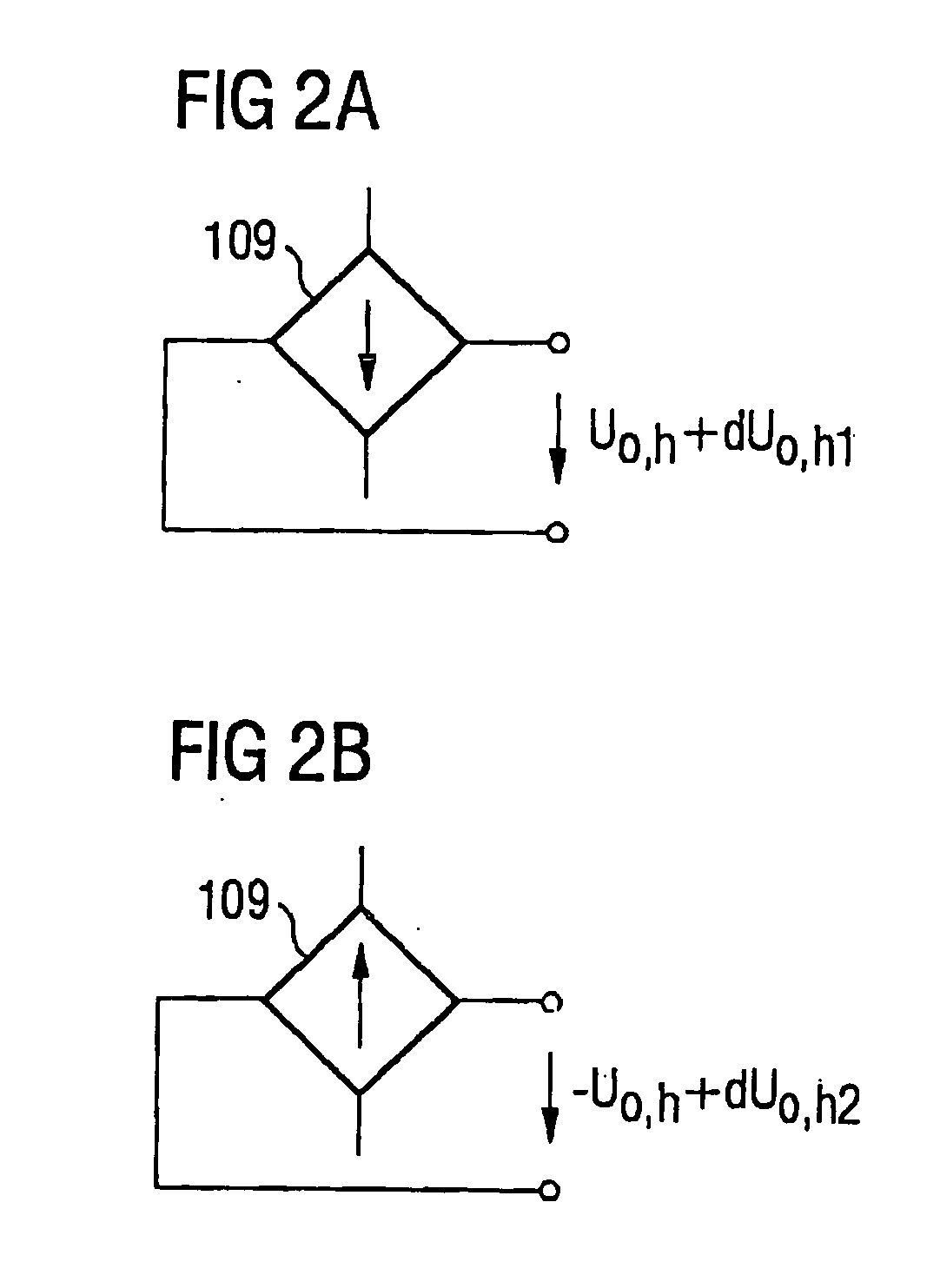Sensor element for providing a sensor signal, and method for operating a sensor element
a sensor signal and sensor element technology, applied in the field of electronic semiconductor sensors, can solve the problems of dc voltage amplifiers suffering from offset problems, hall probes also suffering from relatively large offsets, and disruptive, in particular offset drifts, so as to reduce the offset, reduce the energy consumption, and reduce the effect of the offs
- Summary
- Abstract
- Description
- Claims
- Application Information
AI Technical Summary
Benefits of technology
Problems solved by technology
Method used
Image
Examples
Embodiment Construction
[0048] In the following description of the preferred embodiments of the present invention, identical or similar reference numerals will be used for those elements depicted in the various drawings which have similar actions, a repeated description of these elements being omitted.
[0049]FIG. 1 shows a block diagram of an embodiment of an inventive sensor element 100. The sensor element 100 includes a first contact terminal 102, a second contact terminal 104, a third contact terminal 106, and a fourth contact terminal 108. In addition, sensor element 100 includes a measuring element 109 which may be connected to the first contact terminal 102 via a first terminal, to the second contact terminal 104 via a second terminal, to the third contact terminal 106 via a third terminal, and to the fourth contact terminal 108 via a fourth terminal. In addition, the sensor element includes a first output terminal 110 and a second output terminal 112. Furthermore, the sensor element 100 has a switch...
PUM
 Login to View More
Login to View More Abstract
Description
Claims
Application Information
 Login to View More
Login to View More - R&D
- Intellectual Property
- Life Sciences
- Materials
- Tech Scout
- Unparalleled Data Quality
- Higher Quality Content
- 60% Fewer Hallucinations
Browse by: Latest US Patents, China's latest patents, Technical Efficacy Thesaurus, Application Domain, Technology Topic, Popular Technical Reports.
© 2025 PatSnap. All rights reserved.Legal|Privacy policy|Modern Slavery Act Transparency Statement|Sitemap|About US| Contact US: help@patsnap.com



